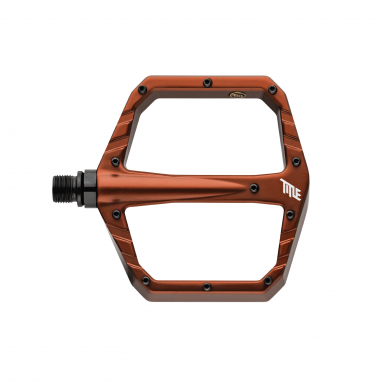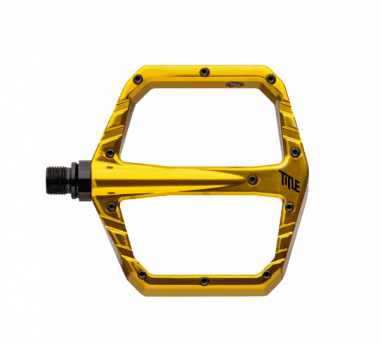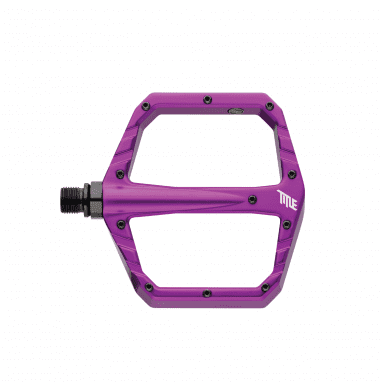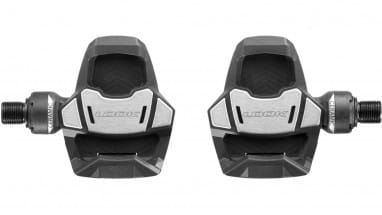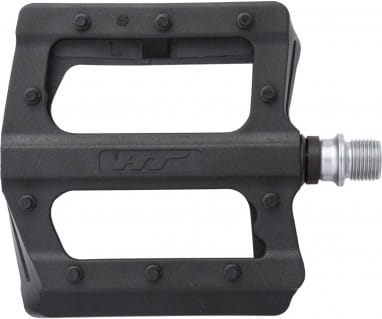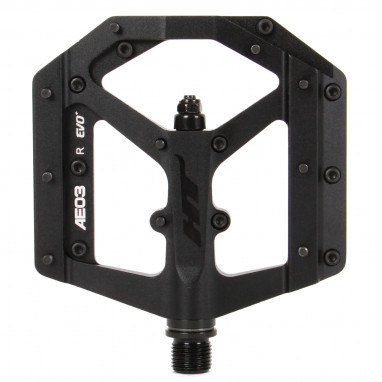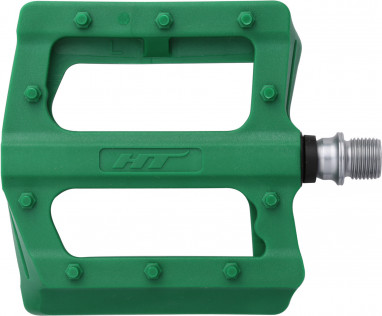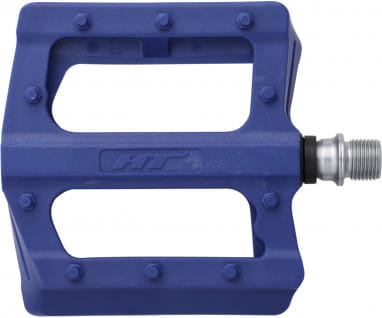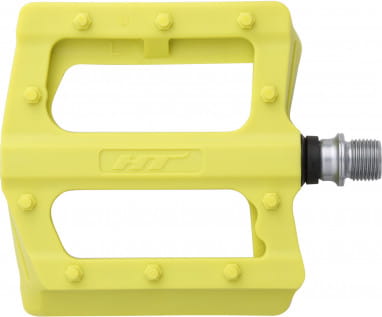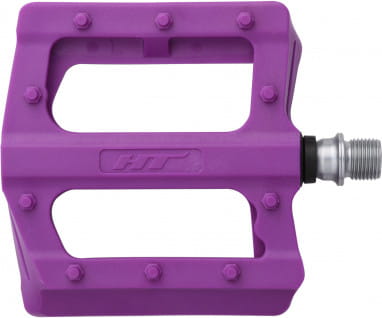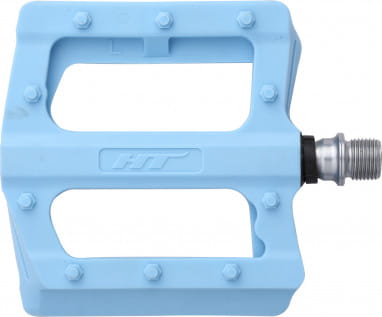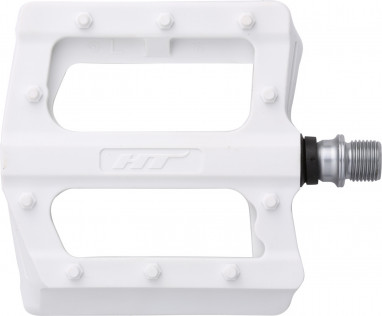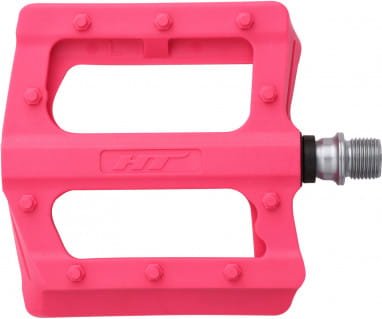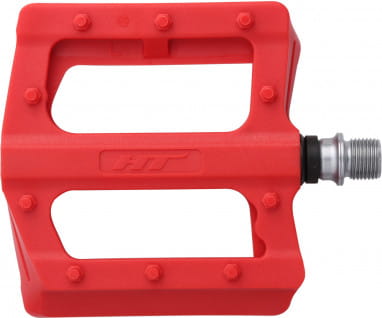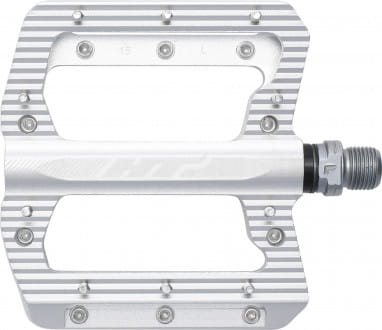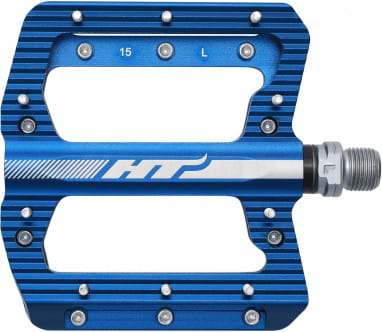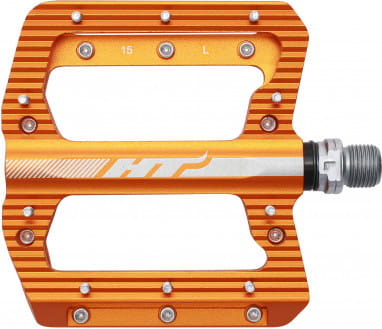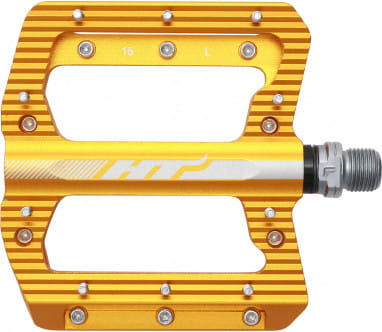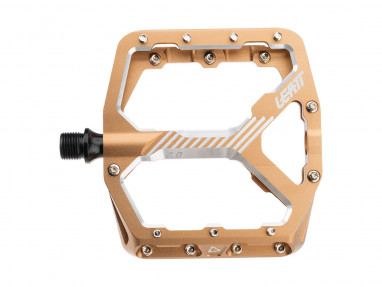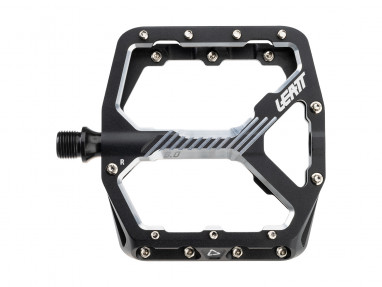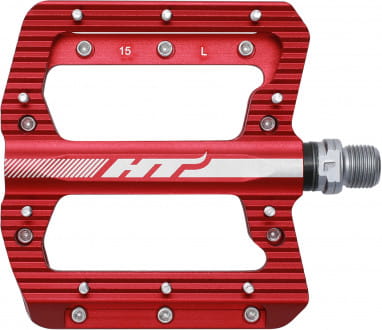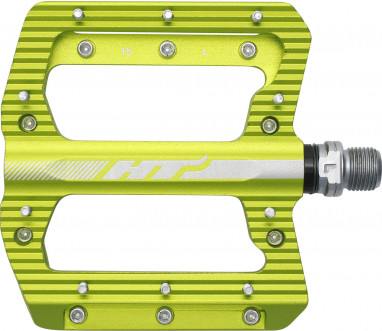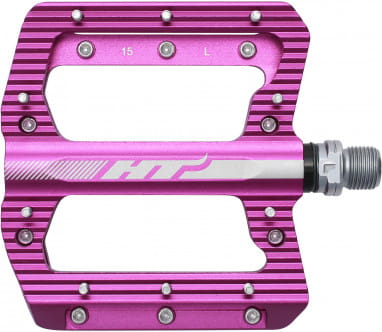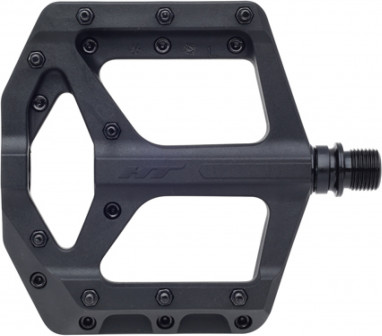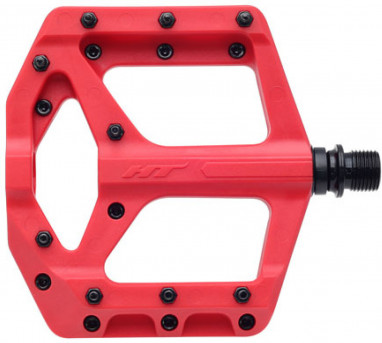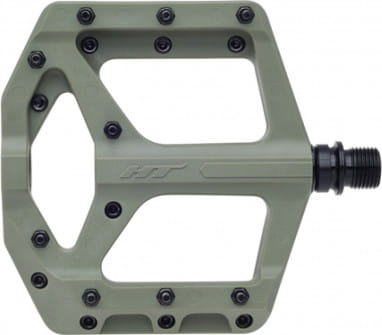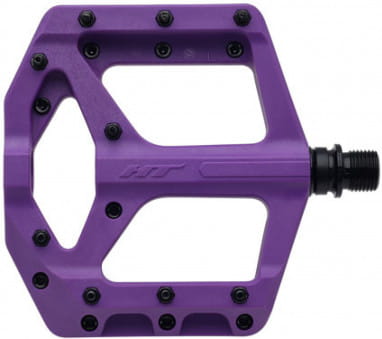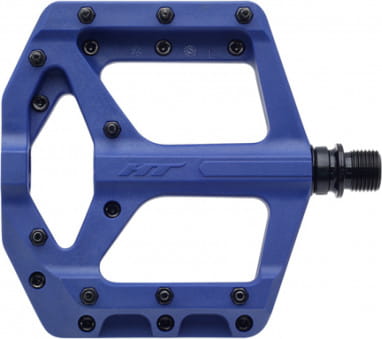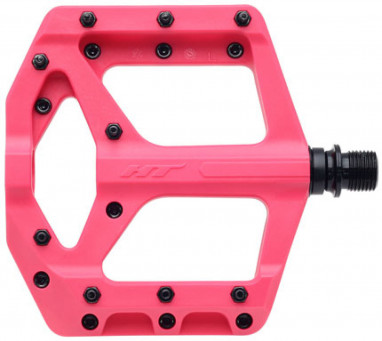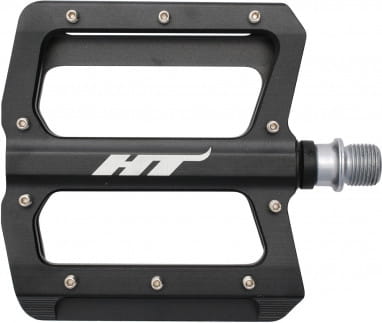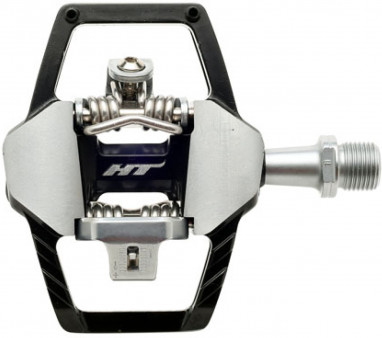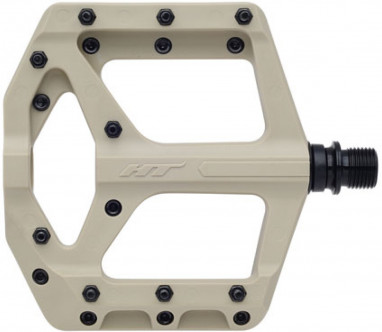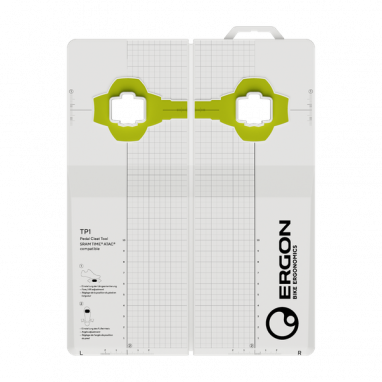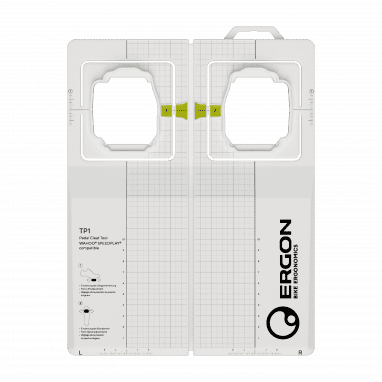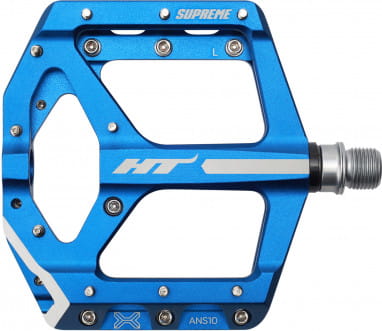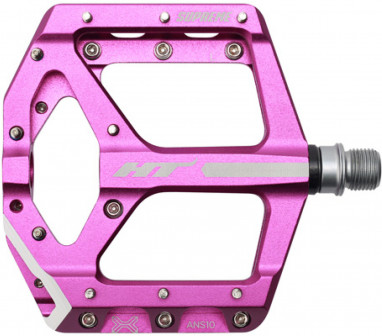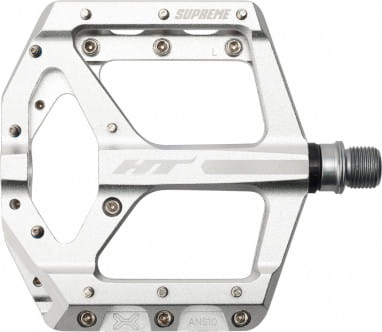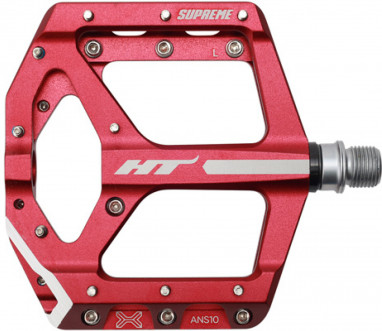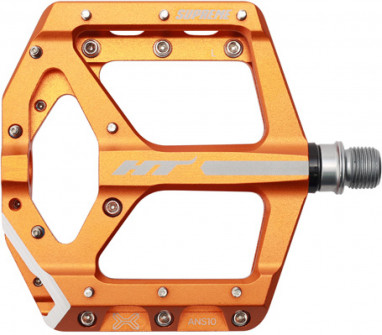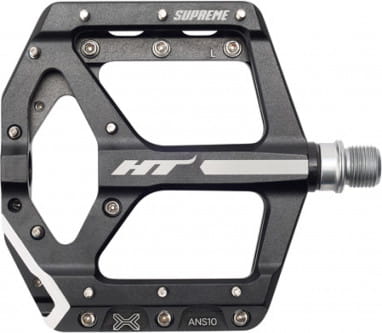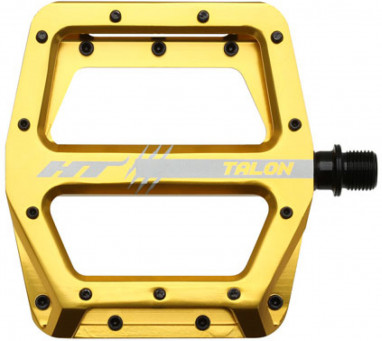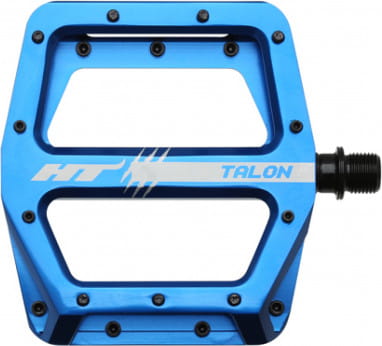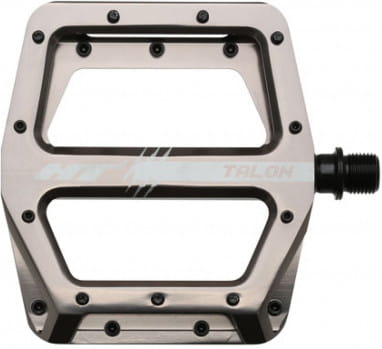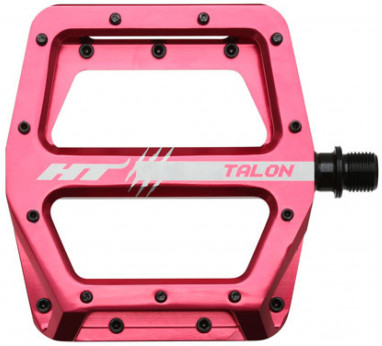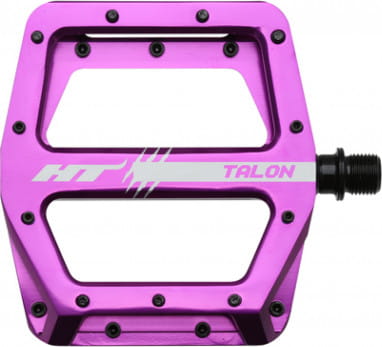The pedals transfer your pedaling power to the chain, so your bike goes forward. Without bike pedals? You'll have to push ...
Bicycle pedals in general have to endure a lot! You pedal them, stand on them, don't care for them, and still demand reliable service! Hardly any other component of your bike is subjected to such forces as the pedals are. When you fight your way up a hill in a saddle, your entire body weight weighs on them. Therefore, pedals are absolutely heavy-duty in terms of construction and materials. And for once it doesn't matter whether you ride a road bike, a downhill bike, an e-bike or a dirt bike. The pedals have to withstand a lot, the rest is (almost) irrelevant.
What are you into?
Principally, there are three types of pedals: clipless, platform, and a mix of both.
Platform pedals
Platform pedals come in a variety of names:
- Flats
- Cages
- paws
- Bear paws
- Block pedals
- Norm pedals
The pedals then differ somewhat, but the system is the same, you have a more or less cantilevered tread surface on which the shoe finds grip without being fixed. Flats or platform pedals is the generic term. Block pedals have a flat surface on which riffles or a sandpaper-like coating provides grip. Cages have a grippy rim made of metal tape. Paws and bear paws refer to bicycle pedals that bite into the sole of the shoe with pins, or small spikes, for good power transfer and plenty of grip. Since the foot is movable, but still finds good grip, paws and cages are the most popular mountain bike pedals. Mountain bikers who love challenging terrain are especially fond of these pedals. In a missed jump first to disengage the shoe from the MTB pedals would cost valuable time and endanger the biker unnecessarily.
Advantages of platform pedals:
- flexible stance
- the feet are free to move, so they are mostly MTB pedals and especially popular with everyday cyclists, trail bikers, enduro riders, freeriders and on dirt bikes
- No special shoes are required
Disadvantages of platform pedals:
- worse power transfer
- less control over the bike
Click pedals
You can find click pedals also under the following names:
- Clickis
- System pedals
- Cleats
The faster an athlete wants to get on their bike, the more likely they are to be on clipless pedals. Klickis simply offer better grip, especially in wet conditions, which increases safety on the bike. The direct power transmission also increases efficiency, your pedalling power is optimally transferred to the drivetrain, because you can not only pedal, but also pull on it. While road cyclists appreciate the better power transmission, mountain bikers are happy about the perfect control provided by the connection between MTB and biker, especially among marathon and XC riders MTB pedals with click are popular.
The attachment of the adapter plates of the bike shoe to the bike pedal can be done via different systems. Many systems engage with a "click", hence the also name click pedals. Especially on mountain bikes some clipless pedals don't click, the shoes are held on the pedal by strong magnets. In case of a fall, your feet are free faster and you can support yourself with your legs.
The feet don't stick completely rigidly to the bike though, some freedom of movement is usually given before the shoes come off the pedal, this range of movement is called "float". To get your foot off the pedal you have to turn your heel outward. At how much force the shoes disengage can be individually adjusted on many pedals. In order for the pedals to engage, the shoes must have an adapter plate, so special biking shoes are a must. These adapter plates are called cleats, they are either already in the shoes, or you have to screw them into a recess in the sole afterwards.
Road cyclists in particular appreciate the uncompromising power transfer that only clipless pedals can provide, so clickies are classic road bike pedals.
Advantages of clipless pedals:
- perfect power transmission
- High control due to a direct connection to the bike
Disadvantages of clipless pedals:
- special shoes are a prerequisite
- both the adapter plate of the shoes and the pedals need to be kept clean, otherwise the shoe will not engage properly
- by releasing too late, unsightly falls can occur
- riding with clipless pedals takes some practice, it has to be learned
- it quickly becomes slippery on the adapter plate when you are running; therefore, caution is advised during pushing passages
Combination pedals can do both
If you can't decide between bike pedals with or without a click, combi pedals are a good choice. They have a click system, but still have enough material around the outside that you can get a grip on them even with normal shoes on.
But there are also hooks or toe caps that you can use to pimp your pedals. These hooks clamp the toe cap from the front and improve grip. Pedal Straps work similarly. Both are often found on stylish fixies. A mix of metal cage and leather straps is popular on retro road bikes.
With 3 questions to find the right pedal in a flash:
- Click pedals or platform pedals?
- For which area of use should the bicycle pedal be designed? For mountain bikes and road bikes there are both types of pedals, you can also buy clipless pedals for trekking bikes. All other bikes usually use block pedals.
- Which material should the pedals be made of? The material has a great influence on the weight of the bicycle pedals, moreover, the choice of aluminum, steel, magnesium or plastic is directly reflected in the price.
Smart pedals from Garmin
Why not take the power right where it comes from? That, or something like it, was probably the thought process that led to Garmin's smart pedals . The clipless pedals have integrated power meters that measure values such as the duration of the pedal revolutions or the force distribution. Thus, they provide an accurate picture of your riding behavior and help you to bring maximum performance. Of course, these pedals are not cheap and you should not forget to recharge the batteries in time. For competitive athletes and ambitious hobby bikers, however, these pedals are excellent training tools.
Worth knowing about bike pedals:
Do all pedals fit my bike?
Whether mountain bike, city bike, road bike or trekking bike, the threads between pedal and crank are standardized. You will find 9/16 inch on most bikes, 1/2 inch is mainly found on BMX bikes. But there is a right pedal and a left pedal, the threads are turned differently!
What do bike pedals weigh?
Lightweight road bike kickis weigh about 240 grams, while a pair of massive enduro platform pedals with pins hits about 500 grams. Here, of course, it depends mainly on the material. Clipless pedals are usually the lighter option.
What? No pedals on the new bike?
You've bought a new bike, it's delivered and then that - there are no pedals in the box! Cheeky? No, not cheeky, the bike manufacturers can't foresee whether you'd prefer to ride clickies or flats, so especially with high quality and sporty bikes there are no pedals in the shipping box. The more experienced the biker, the greater the likelihood that the pedals supplied will end up in the bin anyway, which is why bike manufacturers are increasingly foregoing supplying pedals. The money that is saved in this way is then spent on other components.
The StVO has something to say about this...
This is the part that style-conscious bikers don't like to hear at all - on bikes, glowing orange reflectors on the sides of the pedals are mandatory, and they shine front and back. Just for the record,
The pedals, the pedal - which is correct?
There's actually a lot of disagreement here, so to help you act like a cycling pro, we'll tell you the correct term. Correct - according to the Duden - is both! The pedal, the pedals is the official variant, but since many people speak of the pedals, the pedals that's also been added to the word list. So you can't go wrong! Foot lever is the only other name for pedal, by the way.
Here's where to find pedals
In our online shop under the category Pedals you will find a huge selection of different models. Click pedals, flat pedals, platform pedals with strap and much more. For every taste the highest quality pedals are to be had here, well-known manufacturers like Crankbrothers, Acros, SQLab, Shimano, Cinelli or Race Facebuild excellent pedals for MTB and road bikes. Of course we always supply pedals to match your bike, so they come in many different colours, red, blue, black or all colourful, there's no limit to your colourfulness here
We also provide you with the matching biking shoes. You can buy mountain bike shoes with a click plate and with normal sole also race bike shoes there are "with and without", but usually road bike shoes are equipped with cleats from the factory. However, you can also find cleats, i.e. cleats for retrofitting and other accessories for your pedals on BMO.
